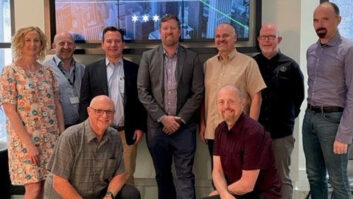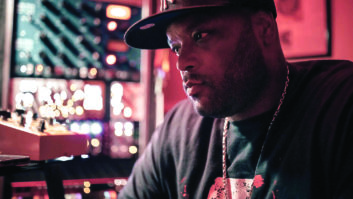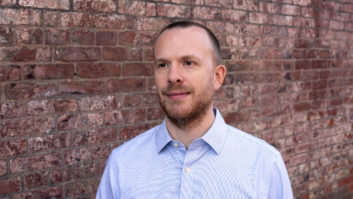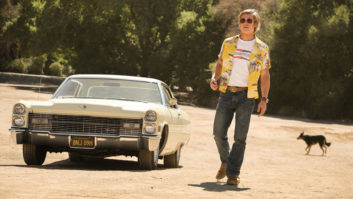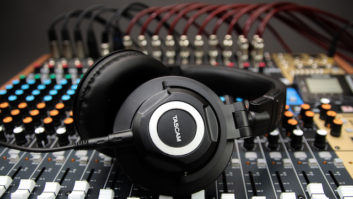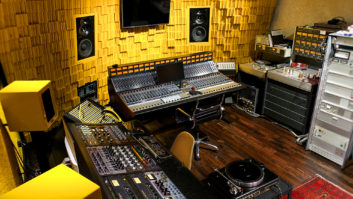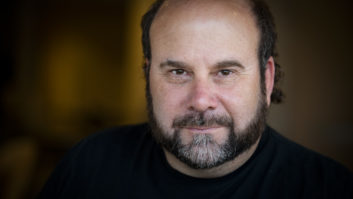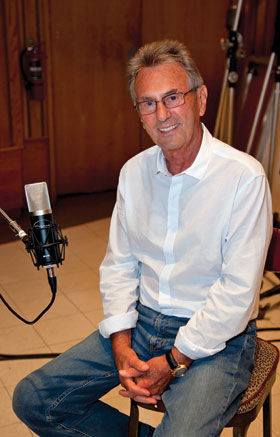
Quality. You know it when you hear it or see it. You know when it’s not there. But defining it is slippery at best. Recently we spoke with eight industry pros, representing numerous segments of the audio world—from studio and mobile recording to design to hi-def and hi-res delivery formats—about issues of quality.
Al Schmitt
Al Schmitt
Schmitt is a multi-Grammy-winning engineer and producer who has worked in six decades with such acts as Sam Cooke, Jefferson Airplane, Steely Dan, George Benson, Frank Sinatra, Ray Charles and Diana Krall.
“Quality is still the most important thing as far as I’m concerned. Like most people, I now use Pro Tools all the time. But I still use an analog board—the new board at Capitol is a Neve 88R and it’s gorgeous. It’s so quiet and the preamps are great. I record everything I do at either 96k or 192, and when I mix down, I mix at 192, even if it’s going to end up at 44.1.
“I guess I’m one of the few guys who doesn’t use plug-ins. They were pretty bad at the beginning, but now I’m getting reports back from a lot of people I know and respect who are using them and really like what they’re hearing. They’re getting much closer to the actual analog equipment. I still prefer using a Fairchild compressor and Pultecs—all the real things. I’m fortunate enough to have them at hand—either I own them or Capitol does, or if I’m at Avatar in New York, they do. I’m one of the lucky ones that way.
“Unfortunately, we’ve dumbed down the sound so much for the buying public it’s a shame. Someone told me about a study involving kids where they played MP3s and then they played the hi-def stuff, and the kids preferred the MP3s, because that’s what they’re used to I guess—that’s what we’ve fed them. A lot of people don’t get to hear what we hear in the studio and that’s too bad. But I’m not going to change what I do because of that. There will always be people who care about quality, too.”

Ed Cherney
Ed Cherney
Ed Cherney’s brilliant engineering, mixing and production career has found him working with the likes of the Rolling Stones, Bonnie Raitt, Little Feat, Eric Clapton, Madonna and many more.
“I’m still committed to quality. As we’re getting greater bandwidth and higher resolution, higher quality is in the pipeline and available to people. When you get to 96k and then 192, it’s astonishing.
“But portability has trumped quality in a lot of ways, and I absolutely understand that. There’s a time and a place for it. We have a generation—maybe two generations—of consumers that just don’t know about quality, and I don’t know if they care. I think they need to be educated, perhaps. I approach it this way: I want my stuff to sound good playing off of iPhones and some $8 transducers, but there’s a big difference between that truncated digital mess and listening to high-resolution through a good stereo.
“It’s such a greater experience, and the music is so much more emotional when you listen to it the way guys like me intended for it to sound. My idea of quality is to get the consumer as close as we can to what we’re hearing in the studio. We’re taking very specific steps in the studio to make it sound great and to be emotionally rewarding. And I don’t think you get the emotional payoff when you’re listening to compressed audio through shitty transducers. That said, I love the idea that you can have the entire library of music in the world in your pocket. I think that’s spectacular.
“I do see people looking for quality more and more with the headphones they’re listening to. They’re not satisfied with earbuds. So that’s at least one step forward.”

John Storyk
John Storyk
For more than four decades, John Storyk (and the Walters-Storyk Design Group) has been a pre-eminent studio architect, designer and acoustician, working on thousands of studios big and small worldwide.
“It’s up to each person to make their own decision as to what their quality threshold is. We have said ‘no’ to projects on occasion where we could tell they just weren’t going to be executed in a professional fashion. A subpar project doesn’t do us any good, because when a project is done, that’s part of our legacy. We can’t stand at the door with a card that says, ‘Well, we did a perfect job on the drawings, but the guy decided to not execute it correctly.’ So we’re pretty careful, and thousands of studios later, we are fortunate to be able to attract quality projects and quality clients. On the flipside, I’ve taken projects that are not as economically sound as others might be, but I can tell that the person is really going to try hard and do everything in their power to get it done correctly. Maybe there’s an experimenting coefficient that allows us to try some new techniques and materials. Or there could be a geography coefficient—an interesting location.
“Strangely enough, the more interesting projects are often the smaller ones. Occasionally, they are the more experimental clients. But don’t misinterpret that! I’m up for taking big projects. There’s a time and a place for large ‘mothership’ studios—with big real estate, or destination studios, or high profile, high service studios. We’re always going to have these facilities to work on, and the audio production community needs them. But the backbone of our industry now, where music is made, is much more in what we used to call the ‘project studio’ or the home studio.”

Mark Waldrep
Mark Waldrep
The head of the audiophile AIX Records has taken the bold step of producing and releasing new music recordings on Blu-ray in order to get real HD-Audio, multiple mixes (“stage” and “audience” 5.1 mixes and a 96kHz/24-bit stereo mix) and even some with 3D video. Recent releases have included country artist Mark Chesnutt, trumpeter Wallace Roney, singer Rita Coolidge, classical/jazz crossover pianist Bryan Pezzone and country picker Albert Lee. Waldrep also founded the HD-Audio download site, iTrax.
“Even though I own a really nice studio, with five B&W speakers, a Euphonix System 5 digital console and THX certification, I only mix my projects here. We needed to find a place that’s got lots of space, a gorgeous piano and great acoustics. We found the Zipper Auditorium at the Colburn School [in L.A.], which is acoustically wonderful, has a 120-foot ceiling, a 1.8 reverb time and is very cost-effective. AIX creates our projects over two to three days in the hall.
“We take half a day to set up the equipment and record six to eight records over the three days. Each ensemble/artist gets four or five hours. They’ve got to know what they’re playing and be able to perform live to a very high standard. We don’t do a lot of running into the control room—since there isn’t one—and we don’t do playbacks. “Does everyone feel good about that?” “Yeah, that sounds pretty good.” We want the ultimate project to feel like a private performance in the listener’s own playback space. We capture the artist straight to HD equipment without any overdubs or processing. The result is a uniquely pure and open sound—people recognize right away that purity of the music.”

Joel Singer
Joel Singer
Joel Singer is the systems designer, technical engineer and occasional project engineer for Music Mix Mobile (M3), whose remote work has included the Grammy Awards, various Comedy Central and MTV shows and live concerts with many top names, including Katy Perry, Jay-Z, John Mayer, Sting and Paul McCartney.
“When we started M3, we knew what we liked and didn’t like in the past, and we wanted to be able expand on that. After extensive listening tests, we went with a front-end which was totally Grace [Audio] from the stage. The 802R is a tremendous remote-controlled preamp that fit perfectly into our world, and from there we kept defining our signal path. We determined MADI was the way we wanted to do things—carrying around these signals as digital signals.
“For budgetary reasons, however, not everyone can afford the Graces and the big truck. We own two smaller trucks now, and we have Aphex 188s on those. The 188 has Ethernet control on it and you can do S/MUX 96k. For other reasons we built Apogee A-to-D racks so we can do 64 channels at 96k in portable situations, where we just plug in 500 Series lunchboxes or other mic preamps.
“Our trucks don’t have any outboard gear whatsoever. Everything is totally inside the box. We can adapt gear for guest engineers, but with the way we work and the way most people work, Pro Tools is the only way for us now. Whether or not you’re mixing with us, or you’re mixing in another Pro Tools studio, or you’re mixing it in your bedroom, or you’re the band’s engineer and you’re going back to your hotel room and mixing it there— it’s still Pro Tools. They can take our sessions and take our audio and keep going.”

John Meyer
John Meyer
Meyer is the founder of Meyer Sound Laboratories, best known for their innovative loudspeakers and SR and film sound systems.
“For us, quality is the extra effort one takes to create something beyond what is popular or ‘just good enough’ to make a sale. This effort sometimes entails pushing past the status quo and coming up with new solutions before there is a demand in the marketplace.
“When we first showed our HD-1 studio monitor in the late 1990s, critics said the accuracy of the HD-1 went way beyond what was necessary. They were happy with the status quo. Now, some 20 years later, many of these critics have come around, and the HD-1 is the audio monitor of choice among record producers, studio engineers, FOH mixers and mastering engineers.
“Every day, companies make decisions between maximizing profit and maximizing long-term value for their customers. What keeps audio fascinating for us is putting everything we know into every product, and exceeding our customers’ expectations with new and better solutions. You have to trust that customers will grow to appreciate the extra quality, and that the improvement will make a difference to them. Stevie Wonder once said that our products helped him make his music better, which was a humbling tribute.
“Moving quality from concept to reality requires repeated testing and checking. We have an independent QC group that evaluates every unit from the customer’s perspective. These processes are a significant ongoing investment, but only innovative products with consistent and predictable performance can drive the industry forward.
“Robert Pirsig wrote a book about the philosophy behind quality back in the ’70s, Zen and the Art of Motorcycle Maintenance, which I highly recommend.”

David Chesky
David Chesky
The audiophile label Chesky Records is pushing the quality envelope with its one-to-one copies of its 192/24 master discs. David and Norman Chesky also run an HD download site, HDtracks, which offers master-quality 192/24 and 96/24 albums ranging from Stevie Wonder to the Grateful Dead to Madonna.
“HDtracks has a simple premise—to give people the highest-quality resolution available today. It’s for people who listen to music attentively. HDtracks is not for people who listen to music while they vacuum or rollerblade, or whatever. That’s not our market. An HDtracks high-resolution file is the best-sounding format on the planet because, first of all, when you download this into a computer, you don’t have a problem with a silver spinning disc [like a CD]. When you spin a silver disc you have a jitter problem that corrupts the data, and you also have error correction from the laser that’s reading it. We don’t have that. When you download a hi-res file from HDtracks and put it in the computer with a program like Amarra, JRiver, Media Monkey or Pure Music, you put the file in RAM, so there are no moving parts. This is the record player of tomorrow. And with 192/24, it’s like we’ve given you a clone of the master tape.
“It’s been easy to convince bands to put their music up on HDtracks because no musician spends seven months in a recording studio slaving over EQs, echo returns and things like that to have their art be played on two five-dollar plastic computer speakers. So we’re giving mastering engineers, producers and artists a vehicle to show off their art. We went through this lull and everybody wanted cheap MP3s, but with this technology, people can rediscover music they loved and get involved with it again in a deeper way.”

Dennis Leonard
Dennis Leonard
Dennis Leonard is both a music mixer who plies his trade on live hi-res audio and video webcasts at TRI Studios in San Rafael, Calif., and an Oscar-nominated mixer sound supervisor who works out of Skywalker Sound.
“The most horrible part of where music has gone is that ‘digital’ is a buzzword, and because MP3 is digital, we have a generation of kids that are putting in earbuds, listening to ridiculously compressed low-resolution material, and are excited that it’s digital. I think their excitement comes from the fact that it’s loud all the time. If you do the math on 44.1/16-bit, there’s so much missing information that our analog brains have to fill in the spaces, so the relaxation one could have listening to music has been extracted by the fact that we have to compensate mentally.
“But let’s be hopeful and call this the end of the first wave of digital. Now there’s been a tremendous renaissance in vacuum tubes, finding and reviving old classic mics and compressors, a plethora of manufacturers making good copies of old gear, and people using these devices in combination with high-resolution digital. I think we’re achieving something that wasn’t previously achieved.
“What’s going on at TRI is really great for a sound-head, because it’s this great combination of the hi-res and live performance and live mixing—there’s nothing like live mixing if you can ride the surf wave and mix instantly, with no rewind. There are a lot of people around who can do that quite well, but do it in a studio environment with an API console—a classic analog desk—and using classic analog mics, mic pre’s and compressors, great reverb boxes. That’s as good as it gets as far as I’m concerned.”
